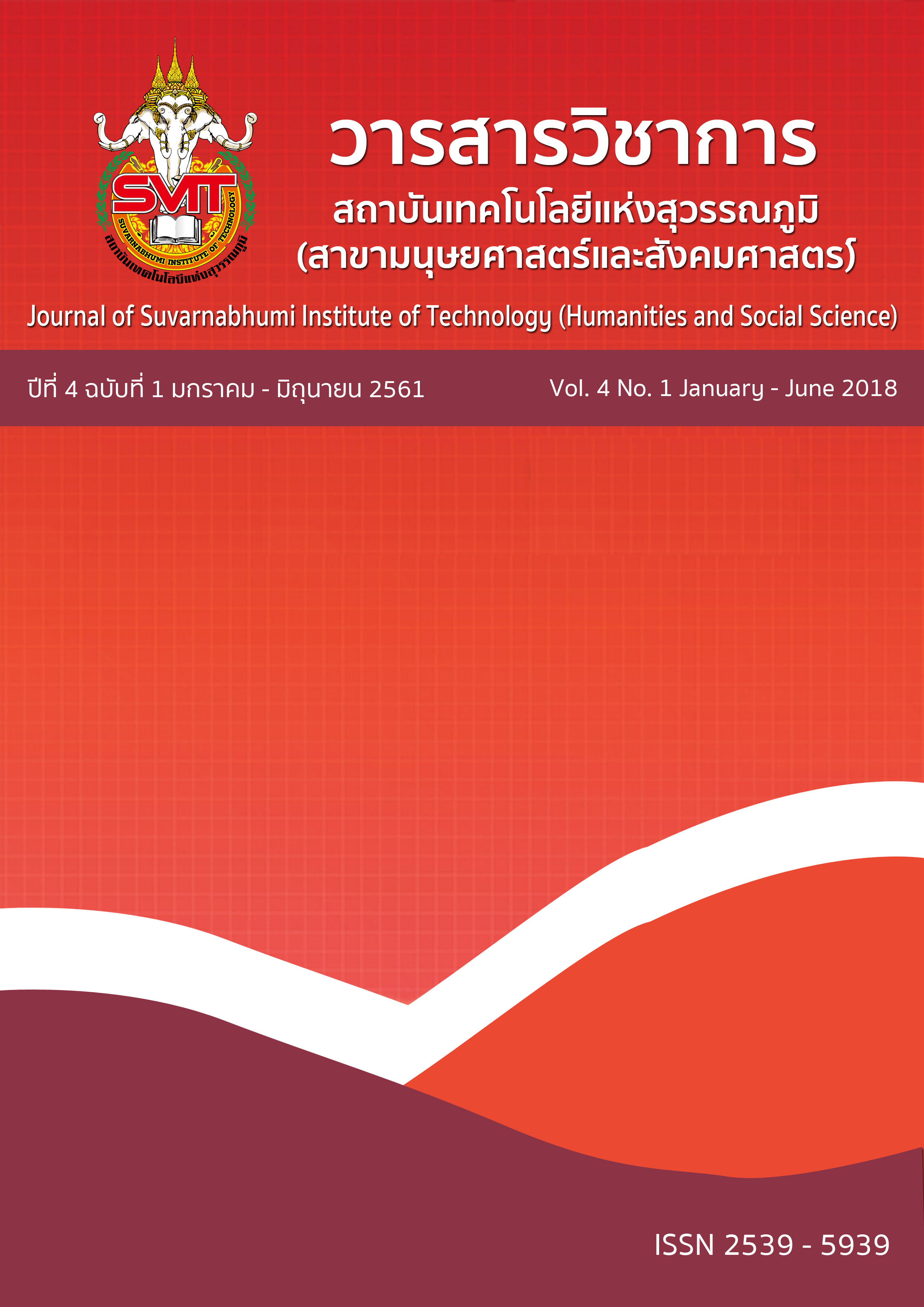THE DEVELOPMENT OF CHINESE LEARNING ENVIRONMENT SYSTEM FOR SECONDARY STUDENTS
Keywords:
Chinese Learning Environ-ment System, Chinese Learning Environment, Web-Based InstructionAbstract
The purpose of this research is to develop an effective Chinese Learning Environment System for secondary students to be up to the performance standard 80/80. To compare the pretest score and the posttest score. And to study students’ satisfaction towards Chinese Learning Environment System for Secondary Students. The target groups used in this study were 44 students in the first semester of the academic year 2016, 44 students. The instruments used in this research are the following aspects; the system of teaching and learning environment in Web-Based Instruction, 第一次见面, Lesson plan, the achievement test, and the satisfaction questionnaire with learning in Web-Based Instruction.
The research study showed that:
1. The effectiveness of Chinese Learning Environment System for Secondary Students in Web-Based Instruction. 第一次 见面 was 80.11 / 80.08, which was efficient according to the standard 80/80.
2. The comparison of pretest and posttest scores. The result showed that the posttest score is higher than pretest score significant at the .05 level.
3. Students’ Satisfaction towards Chinese Learning Environment System for Secondary Students in Web-Based Instruction. 第一次见面. The result showed that student’ satisfaction level was high. It was found that students were satisfied with the lesson content at the highest level.
References
ชัยยงค์ พรหมวงศ์. (2548). การจัดสภาพแวดล้อมการเรียนรู้. โรงพิมพ์บริษัทเอส.อาร์.พริ้นติ้ง แมสโปรดักส์ จำกัด.
ถนอมพร เลาหจรัสแสง. (2544). การสอนบนเว็บ (Web-Based Instruction) นวัตกรรมเพื่อคุณภาพการเรียนการสอน. วารสารศึกษาศาสตร์สาร. ปีที่ 28 ฉบับที่ 1 มกราคม-มิถุนายน 2544 หน้า 87-94.
ทิศนา แขมมณี. (2545). ศาสตร์การสอน – องค์ความรู้เพื่อการจัดกระบวนการเรียนรู้ที่มีประสิทธิภาพ. พิมพ์ครั้งที่ 2. กรุงเทพฯ:ด่านสุทธาการพิมพ์.
พงศ์ประเสริฐ หกสุวรรณ. (2548). การจัดสภาพแวดล้อมการเรียนรู้. ภาควิชาเทคโนโลยีทางการศึกษา,ชลบุรี มหาวิทยาลัยบูรพา.
ศักดิ์รพี วดีศิริศักดิ์. (2553). เรียนสาขาภาษาจีน เรียนรู้รอบโลก สืบค้นเมื่อวันที่ 14 กันยายน 2558, จาก https://blog.eduzones.com/futurecareerexpo/96227.
สุทธิพงศ์ หกสุวรรณ. (2548). การออกแบบและพัฒนาสภาพแวดล้อมทางการศึกษา. เอกสารคำสอนรายวิชาการออกแบบและพัฒนาสภาพแวดล้อมทางการศึกษา. มหาสารคาม: มหาวิทยาลัย มหาสารคาม.
สุวรรณ เลียงหิรัญถาวร . (2551). การจัดการเรียนการสอนภาษาจีนในระดับมัธยมศึกษาตอนปลายของโรงเรียนในจังหวัดเชียงใหม่.กรุงเทพมหานคร: ฐานข้อมูลโครงสร้างพื้นฐานภาครัฐด้านวิทยาศาสตร์และเทคโนโลยี กระทรวงวิทยาศาสตร์และเทคโนโลยี.
สำนักงานคณะกรรมการการศึกษาขั้นพื้นฐาน . (2550). การส่งเสริมการเรียนการสอนภาษาจีน. วารสารวิชาการ . ปีที่ 10 ฉบับที่ 3.
สุรชัย สัมโย.คณะ. (2557). การศึกษาการจัดสภาพแวดล้อมที่เอื้อต่อการเรียนรู้ของโรงเรียน, http://www.ptu.ac.th/StudentServe (สืบค้น พฤษภาคม 2559).
Bertalanffy, L.V. (1968). General system theory: Foundations, Development, Applications. New York: George Braziller.
Bloomington, IN: Solution Tree Press.McVey, G.F. (1989). Learning Environments in the International Encyclopedia of Educational Technology. Edited by M. Eraut. P.124-131. New York: Pergamon Press.
Good, C. V. (1973). Dictionary of Education. 3rd ed. New York: McGraw-Hill.
Hannanfin M., Susan L. and Kevin O. (1999). Instructional Design Theories and Models: A New Paradigm of Instructional Theory Volume II. New Jersey: Lawrence.Jonassen H. D. “Constructivist learningenvironments”. In Charles
M.Reigeluth (Ed), Instructional Desing Theories and Models: A New Paradigm of Instructional Theory. VolumeII. Newjersy: Lawrence Erlbaum Associates, 1999.
McTighe, J. & Seif, E. (2010). An implementation framework to support 21st century skills. In J. Bellanca, J., & Brandt, R. (Eds.), 21st century skills: Rethinking How Students Learn, 149-173.
Perkins, D. N. (1991a). Technology meets constructivism: Do they make a marriage? Educational Technology, 31 (5), 19-23.
Downloads
Published
Issue
Section
License
บทความที่ได้รับการตีพิมพ์เป็นลิขสิทธิ์ของวารสารวิชาการ สถาบันเทคโนโลยีแห่งสุวรรณภูมิ
ข้อความที่ปรากฏในบทความแต่ละเรื่องในวารสารวิชาการเล่มนี้เป็นความคิดเห็นส่วนตัวของผู้เขียนแต่ละท่านไม่เกี่ยวข้องกับสถาบันเทคโนโลยีแห่งสุวรรณภูมิ และคณาจารย์ท่านอื่นๆในสถาบันฯ แต่อย่างใด ความรับผิดชอบองค์ประกอบทั้งหมดของบทความแต่ละเรื่องเป็นของผู้เขียนแต่ละท่าน หากมีความผิดพลาดใดๆ ผู้เขียนแต่ละท่านจะรับผิดชอบบทความของตนเองแต่ผู้เดียว





